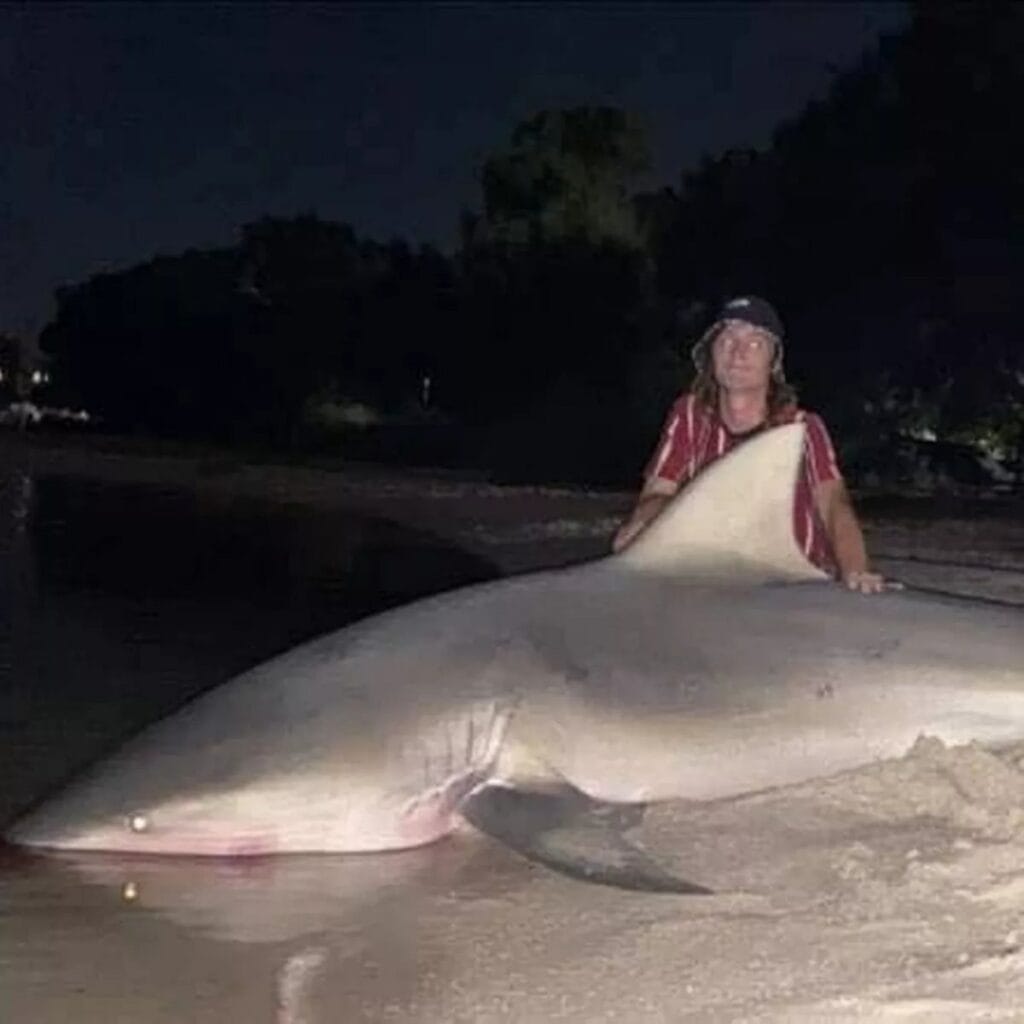Zambezi sharks, also known as bull sharks, inhabit the Zambezi River, capable of living in both fresh and saltwater. This unique adaptability brings them into contact with humans, sometimes resulting in attacks. This article explores the factors contributing to these incidents, their frequency, and strategies for safe coexistence with these important predators.
Decoding the Zambezi Shark
The Zambezi shark (Carcharhinus leucas), also known as the bull shark, possesses a distinctive broad, flat snout and the remarkable ability to thrive in freshwater. This adaptability differentiates them from most shark species and allows them to navigate far up rivers and inhabit estuaries globally. This proximity to human populations increases the potential for interaction, sometimes with negative consequences. So, how significant is the risk these powerful predators pose, and what measures can we take to coexist safely?
Zambezi Shark Attack Hotspots
While Zambezi shark attacks are statistically infrequent, their presence in African waters, particularly around South Africa and Mozambique, necessitates awareness. The Zambezi River, traversing several countries, presents one such area. Warm coastal waters like KwaZulu-Natal and popular diving destinations like Ponta do Ouro also carry a degree of risk. Other locations, including Mtunzini and even the Durban Harbour, have witnessed human-shark encounters, some with tragic outcomes. A documented case from 1961 describes an attack a staggering 190 to 240 kilometers up the Zambezi River, illustrating how far inland these sharks can venture. Understanding these hotspots is crucial for informed decision-making and promoting safe practices.
A History of Zambezi Shark Encounters
Past Zambezi shark encounters provide valuable insights into potential risks. In 1988, 15-year-old surfer Belinda Van Schalkwyk was attacked near Mtunzini. More recently, in December 2022, a diver in KwaZulu-Natal suffered an attack, a stark reminder of the ongoing risks in South African waters, where bull sharks, along with tiger and white sharks, pose the most significant threat to humans. The discovery of two Zambezi sharks in a Durban Harbour dry dock in 2023 underscores their unpredictable appearances. In Ponta do Ouro, Mozambique, a series of attacks within a single week, likely attributed to a single large Zambezi shark, sparked concerns and discussions about effective management strategies. These incidents highlight the need for vigilance and proactive measures to minimize risk.
Culling vs. Conservation: Charting a Sustainable Path
The French government’s incentivized culling of Zambezi sharks in Réunion has ignited debate. Does culling truly protect people, or does it disrupt the delicate ocean ecosystem? What are the probably long-term effects? Conservation efforts and responsible fishing practices may offer more sustainable solutions. Explore the complexities of watchover voodoo doll and their cultural significance.
Minimizing Risk: Understanding Zambezi Shark Behavior
Despite media attention, Zambezi shark attacks are relatively rare. However, precautions are advisable. Avoid murky water, swim with a buddy, and heed local advisories. Ongoing research, like that by the Save Our Seas Foundation, is essential for advancing knowledge and developing effective conservation strategies. Ultimately, peaceful coexistence depends on respecting these creatures and their vital role in our oceans and rivers. Delve into the mysteries surrounding Appalachian cryptids and their captivating lore.
Does the Zambezi River Have Sharks?
Yes, the Zambezi River is home to bull sharks (Carcharhinus leucas), often locally called “Zambezi sharks” or “zambis.” Their unique ability to osmoregulate allows them to thrive in both fresh and saltwater, a characteristic uncommon among sharks. While they can navigate far upstream, they are most commonly found in the lower, brackish reaches of the river. As apex predators, they play a vital role in maintaining the river’s ecosystem. Attacks on humans are rare, but caution is advised.
Bull sharks are not simply aggressive man-eaters. They are complex creatures navigating a challenging environment. Researchers like Meaghen McCord from the Save Our Seas Foundation study their osmoregulation, movement, and ecological role. This understanding promotes peaceful coexistence. The Zambezi River’s health is reflected in the presence of these sharks, though climate change and environmental shifts could threaten their habitat. Scientists are actively investigating these challenges to protect this species. Some believe their movements are linked to breeding cycles or prey availability; others are researching human impact on the river and the bull shark population. Our knowledge is always evolving, making continued research essential. The largest recorded bull shark was caught in the Breede Estuary, South Africa, and young bull sharks have been found in the Umzimvubu River.
How Many People Have Been Killed by Sharks in South Africa?
Shark attacks are a captivating yet terrifying subject, especially in South Africa. Since 1905, 248 unprovoked attacks have been recorded, though not all are fatal. Wikipedia’s “List of fatal shark attacks in South Africa” offers a detailed breakdown. The Eastern Cape leads with 103 attacks, followed by KwaZulu-Natal (90) and the Western Cape (55). The reasons for these hotspots are still under investigation. In 2023, two non-fatal bites were reported, suggesting a possible decrease in incidents, though this could change. While Great White sharks are often implicated, other species also pose a risk. Following safety guidelines and supporting shark conservation is crucial for minimizing risk and maintaining ecological balance.
What is the Deadliest Beach in the World for Shark Attacks?
Second Beach, Port St. Johns, South Africa, carries the grim label of “deadliest beach” for shark attacks, with at least eight fatal incidents. A 2014 attack claimed the life of a 72-year-old Austrian man. Fatalities also occurred in 2009, 2010, 2011, and 2012. While Florida experiences more attacks, South Africa’s attacks are proportionally more fatal. Contributing factors at Second Beach probably include abundant baitfish, warm water, and the Zambezi River’s nutrient-rich outflow. Crucially, limited funding hinders prevention efforts, raising concerns about public safety. Ongoing research explores the complex shark-human relationship and the factors influencing attacks.
- Unveiling the Enigma: Mansoureh Khojasteh Bagherzadeh’s Public Appearances & Private Life in Iran - July 18, 2025
- Unveiling the Mystery: Mansoureh Khojasteh Bagherzadeh’s Husband: A Rare Glimpse into a Private Life - July 18, 2025
- Unveiling Masoud Khamenei’s Mother: Power, Influence, and Iran’s Future - July 18, 2025
















